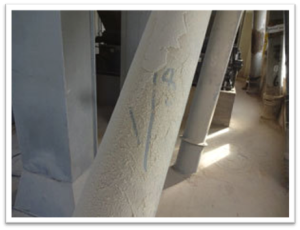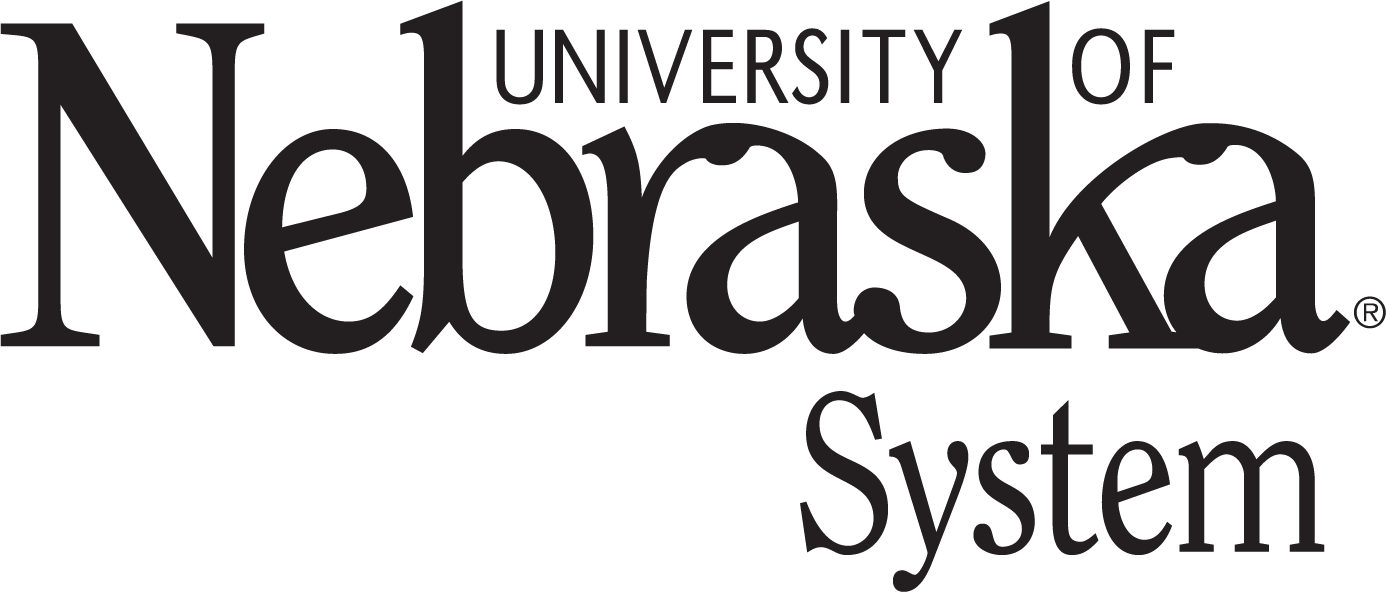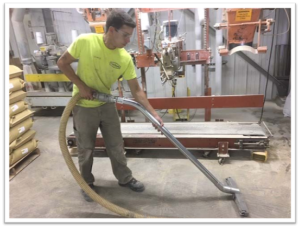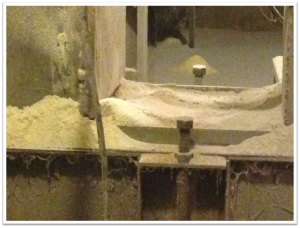1.3 Housekeeping
Fugitive dust is dust that hides out of sight.
This is the dust that can accumulate and become an explosion hazard.
Housekeeping Plan
It is important to develop and implement a written housekeeping plan to reduce accumulations of fugitive dust. The plan should detail the frequency and method of cleaning.
The plan needs to include steps to routinely remove dust from floors, ledges, equipment and exposed surfaces. It should also address priority areas.
Priority Areas
While maintaining well-kept structures is important, there are some specific areas which are high priority spaces for maintaining good housekeeping practices at all times. These include:
- Floor areas within 35 feet of bucket elevators.

- Floors of enclosed areas containing grinding equipment and dryers.
Remove fugitive grain dust immediately that exceeds 1/8” in priority areas.
Compressed Air
When using compressed air to remove dust, do so by only blowing down to minimize the amount of dust put into the air.
Only use compressed air when both of these steps have been taken:
- When all equipment that presents an ignition source is shut down.
- All other ignition sources are controlled or removed.
Compressed air will move the dust into a suspension in the air,
creating a greater hazard for explosion.
All ignition sources have to be shut down or removed.
Grain and product spills are not fugitive grain dust, but their removal should also be included in the housekeeping plan.
Filter systems are a useful tool for overall good housekeeping practices. A few key points to keep in mind.
Filers should be…
- Located outside or
- Inside with a suppression system or
- Inside located on an outside wall and separated by 1 hour fire rated construction and vented to the outside.
Review
Work through these interactive questions to review the important concepts discussed.
Dust particles that escape from equipment and accumulate in the environment. Managing fugitive dust is important to prevent respiratory hazards and dust explosions.
Mechanized systems used to vertically lift bulk materials, such as grain, in feedmills. Safety precautions are essential to prevent entrapment and ensure safe operation.
Machines used to reduce grain or other materials into smaller particles. Proper maintenance and safety protocols are necessary to prevent accidents and equipment malfunctions.
Equipment used to remove moisture from grains or other materials. Proper maintenance and operation are necessary to prevent overheating and potential fire hazards.
Air that is pressurized and used for various purposes, such as cleaning equipment. Compressed air can create dust clouds, so proper ventilation and safety measures are necessary.
A system designed to detect and suppress fires or explosions. In feedmills, suppression systems are important to control and mitigate the effects of grain dust explosions.
Building materials or assemblies that can withstand fire exposure for at least one hour, helping to prevent the spread of fire and ensure safety in feedmill environments.


